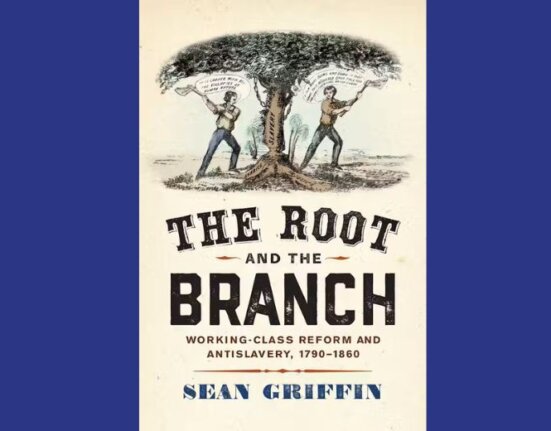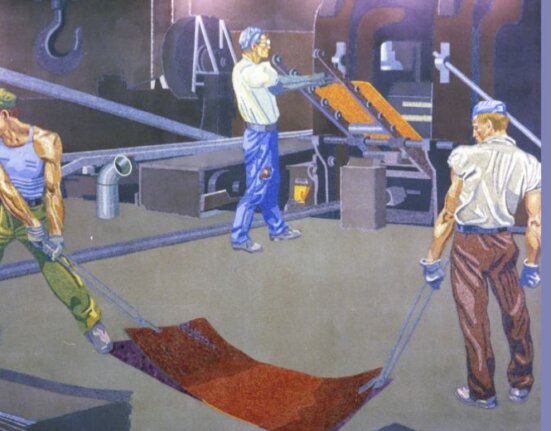As part of our effort to make workers history public in the Baltimore area, we had a state historical marker erected in memory and honor of the Sparrows Point steel mill, once the largest mill in the world and now — as a symbol of post-industrial America — a 3,100-acre wasteland.
The mill opened in 1887 as a division of Pennsylvania Steel, and became part of Bethlehem Steel in 1916 until the company went bankrupt in 2002. After a succession of vulture capitalists flipping the mill for a fast profit, it finally closed in August, 2012, leaving workers with an enormous loss—accrued benefits, retirement, health insurance and, most importantly, with the loss of what had been a secure future.

A continuing controversy was the lack of effort by the union, the community and the political structure to try to keep the mill open. As we noted at the time of closure, the president of France, threatened by the closure of a main steel mill there, proclaimed that if the private owner closed it, the government would seize control and resume operations. In contrast, in Baltimore there was a sense of resignation, anger and frustration which continues.
At the last retirees meeting, when the VP of the development company that now owns the property, spoke about the future, he was berated by one the retirees for tearing down every building “so that I can’t even drive by there and show my grandchildren where I used to work.”
More importantly, the opportunity for young workers to find a “good job” in Baltimore disappeared, leading in part, to the uprising in Baltimore City in 2015.
The jobs were made “good” by five dedicated United Steelworker Union locals, with more than 31,000 members at the peak in 1959, which is the most important lesson that we can learn from labor history. The union was first voted into Bethlehem Steel, one of the Little Steel companies which violently refused to accept unionism in the late 1930s, in September, 1941, after the federal government threatened the company with the loss of war contracts as a repeated violator of the federal National Labor Relations Act.
Beyond the mill, there was a company town of more than 10,000 people, totally controlled by the company and strictly segregated, which was first built in 1887 and was finally torn down in 1975 to make room for the “L” Furnace, again the largest in the world.
The decline and closure of the mill has become an international topic as the discussion of “post-industrialism” became a hot topic. Even Tokyo-TV came to Baltimore to produce a feature on the impact of free trade agreements and interviewed members of the Retired Steelworkers at the old union hall during the regular monthly meeting.
The history of the mill is at SparrowsPointSteelworkers.com and there is a Facebook site, I Worked At Sparrows Point.

As a sign of the intense interest in the history of The Point, one photo has more than 30,000 views on the Facebook site, which usually hits around 350 views per posting. Comments came in from around the world, where steelworkers and the families have scattered.
As one man remarked, “So now that we got our last check from Ira (Rennert—the last owner). And now this marker. I’ll take it as a final farewell to my second home for 39 years of my life.
I might one day, forget what the mills looked like, but I will never forget those that I grew up with throughout the years working together, what a great group of people.” Another woman remarked: “guess this officially makes me a dinosaur! Sniff! :( “
A volunteer from the local historical society recorded the unveiling of the monument on a very rainy Saturday morning in April.
This is the second labor history historical marker in Baltimore. In 2013, a marker was unveiled at Camden Yards, now the Baltimore baseball stadium, but in 1877, the main depot for the B & O Railroad where the national strike started in July, 1877.







